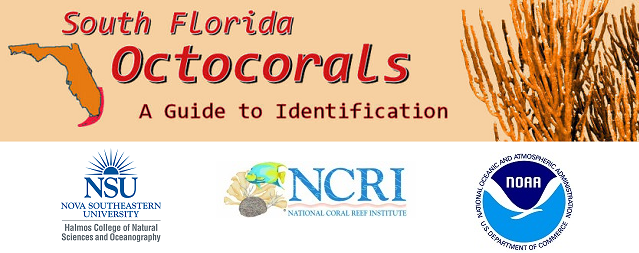Preview

Family
Gorgoniidae
Common Name(s)
Slimy sea plume
Colony Form
Plumose, pinnate, to 1.5 m tall.
Axis
Cylindrical
Branches
Pinnules long, flexible, regularly-spaced, flat or triangular in cross section,across, usually in pairs on opposite sides of main branch.
Apertures
Flush but can appear bulbous; restricted to row along flattened sides of pinnules. Polyps contract slowly and often remain expanded when preserved.
Mucus
Copious; colonies very slimy.
Color
Purple to beige tan; dries purple, brown, beige, tan, pale yellow.
Sclerites
Polyp armature: small rods with rounded knobs; no flat rods. Body wall: scaphoids (curved sclerites) strongly curved with sharp ends often recurved outward, and with convex profile finely spiny; spindles acute, large and ornately sculptured, to 0.4 mm long.
Habitat
Shallow hard bottoms to deep reefs in clear water; 1-50 m.
Distribution
Bermuda, South Florida, Bahamas, Antilles.
Similar Species
Date Taken
4-11-2016



Notes
Williams and Chen (2012) transferred all Western Atlantic species ofPseudopterogorgia to the genus Antillogorgia. Although Antillogorgia americana produces a number of secondary metabolites that appear to have anti-predator functions (Epifanio et al. 2007), it still may be preyed upon by the flamingo tongue gastropod, Cyphoma gibbosum, which preferentially consumes axial tissues near the base of colonies (Harvell & Fenical 1989). Bayer (1961) noted that bleaching for sclerite examination breaks the tissue down very slowly and releases far more zooxanthellae than in either A. acerosa or A. rigida.